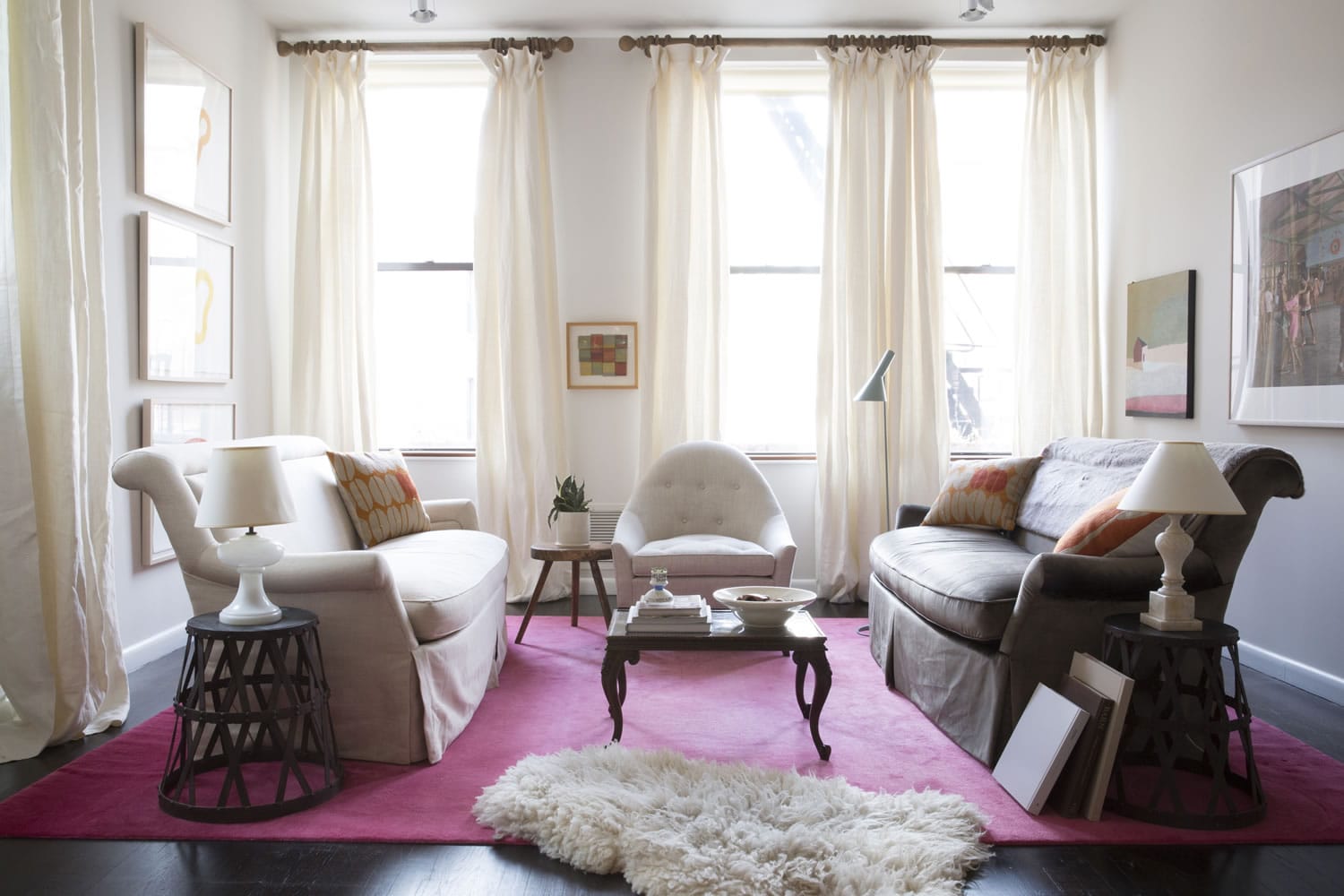“It seems counterintuitive,” he says, “but our eye likes contrast. We like variation.”
Long, dramatic curtains can trick your eye in the same way.
“Hanging curtain rods all the way at the ceiling, using large art and big mirrors and vertical stripes with paint are great ways to make your eye go up visually,” says Kyle Schuneman, co-author of “The First Apartment Book: Cool Design for Small Spaces” (Potter). This has the effect of “lifting the ceiling and making it feel more spacious than it actually is.”
• LOCATION, LOCATION: “Decluttering and cleaning up is always essential,” Ryan says, but you don’t have to pare down your furniture. Instead, try rearranging it to let energy flow more easily.
“A room has good energy and good flow if you can vacuum it without moving any furniture, including the corners,” Ryan says. “If you can’t get behind stuff, that’s a sign that the space is gonna feel a little crowded.”
Experiment with small changes in furniture placement and see whether the room feels different.
“If your bed is pushed up against the wall on two sides,” Ryan says, it may make the room feel tighter. Try moving the bed out so you can step out either side, he says. Losing a bit of actual space could make the room feel roomier.



